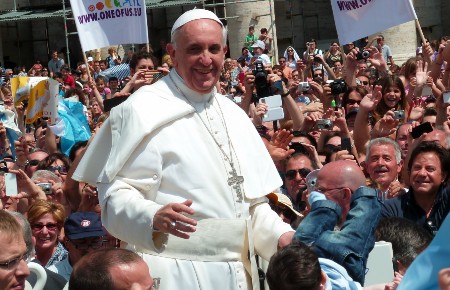 Hi readers, it seems you use Catholic Online a lot; that's great! It's a little awkward to ask, but we need your help. If you have already donated, we sincerely thank you. We're not salespeople, but we depend on donations averaging $14.76 and fewer than 1% of readers give. If you donate just $5.00, the price of your coffee, Catholic Online School could keep thriving. Thank you. Help Now >
Hi readers, it seems you use Catholic Online a lot; that's great! It's a little awkward to ask, but we need your help. If you have already donated, we sincerely thank you. We're not salespeople, but we depend on donations averaging $14.76 and fewer than 1% of readers give. If you donate just $5.00, the price of your coffee, Catholic Online School could keep thriving. Thank you. Help Now >
Purim
FREE Catholic Classes
(P HURIM ).
The origin of the name is disputed: some derive it from the Persian pure (part lot), or pur (full); others from the Aramaic purah (root parar, to break into pieces). The feast was instituted to commemorate the deliverance of the Jews from the machinations of Xerxes's minister, Haman, who had obtained from the king an edict for their extermination, date of the massacre, 13 Adar, being appointed by lot ( Esther 9:26 ). Through the intercession of Esther, Jewess and queen of the realm, the edict was recalled, and on 13 Adar the Jews, certain of royal protection, defended themselves and killed a large number of their enemies (ix, 16). In Susa (then the Persian capital) Jewish vengeance reigned for two days, in other parts of the realm for one day (ix, 17, 18). Hence the Purim was celebrated on 15 Adar in Susa, and in other parts on 14 Adar. Reuss (Gesch. des Alten Test., § 473) identifies it with "Nicanor Day", and holds the Book of Esther responsible for the name Purim, but this theory is refuted by the "Mêgillah Ta’anith" (second century, A. D. ), where 13 Adar is still called "Nicanor Day". Fürst (Kanon des A. T.) and Meier (Heb. Wörterb.) identify the feast with the Persian spring festival, which the Jews are supposed to have adopted in Susa ; the Book of Esther is then a mere allegory, intended to cast a national halo about the feast. Von Hammer (Wien. Jahrb. Lit., 1827) calls the Purim a transformation of the Zoroastrian feast Farwadigân (Festival of the Dead), observed during the last ten days of the year. Lagarde (Beitrag zur Gesch. der Religion, 1887) elaborated this theory and brought to its support linguistic considerations of little value. Grätz (Monatschr. Gesch. u. Wiss. der Jud., xxxv, 10-12) derives Purim from purah (winepress), and accordingly identifies the feast with the observance of the Greek and Roman Bacchanalia, forgetting that the wine season is passed when the Purim is celebrated. Others, like Zimmern (Zeitschrift für d. alttest. Wiss., 1891), Jensen (Wiener Zeitschr. für die Kunde des Morgenlandes, VI, 47-209), and Wildeboer ("Comment on Esther " in Marti's "Kurzer Handcomm.", p. 173) wish to make the Book of Esther a mere metamorphosis of mythological legends. These hypotheses, however, have a very weak and doubtful historical basis.
Originally the Purim was celebrated without liturgical services. Later the Book of Esther, the Megillah par excellence, was read on the evening of the vigil and on the morning of the feast. When the name of Haman occurs in the reading, the congregation hisses, stamps, and gesticulates, shouting: "Let his name be blotted out! Let the name of the wicked perish!" The reader names ten sons of Haman in one breath to indicate that they died at the same moment. The vigil is observed by a strict fast called the "fast of Esther ". The feast is celebrated with great solemnity, gifts being exchanged. Sometimes, however, the feast degenerated into an occasion for debauchery and licence, gruesome details (e.g. the burning on a gibbet of an effigy of Haman) being added to the diversions. At times a cross was burned to manifest hatred for the Christians (Cod. Theodos., XVI, viii, 18). When the feast occurred in an intercalary year it was celebrated twice: on 15 Adar (Little Purim) and on 15 Ve-adar (Great Purim). This feast was generally observed as early as the time of the Machabees ( 2 Maccabees 15:37 ) and Josephus (Antiq., XI, vi, 13). The Purim frequently contributed to the preservation of the Jewish faith, when in imminent danger. To this fact the Cairene Purim and the Purim Vincent bear witness. The first commemorates the deliverance of the Jews in Cairo (1524); the latter in Frankfort (1616).









 Daily Readings for Friday, April 26, 2024
Daily Readings for Friday, April 26, 2024 St. Cletus: Saint of the Day for Friday, April 26, 2024
St. Cletus: Saint of the Day for Friday, April 26, 2024 Prayer before the Closing of the Day: Prayer of the Day for Friday, April 26, 2024
Prayer before the Closing of the Day: Prayer of the Day for Friday, April 26, 2024

